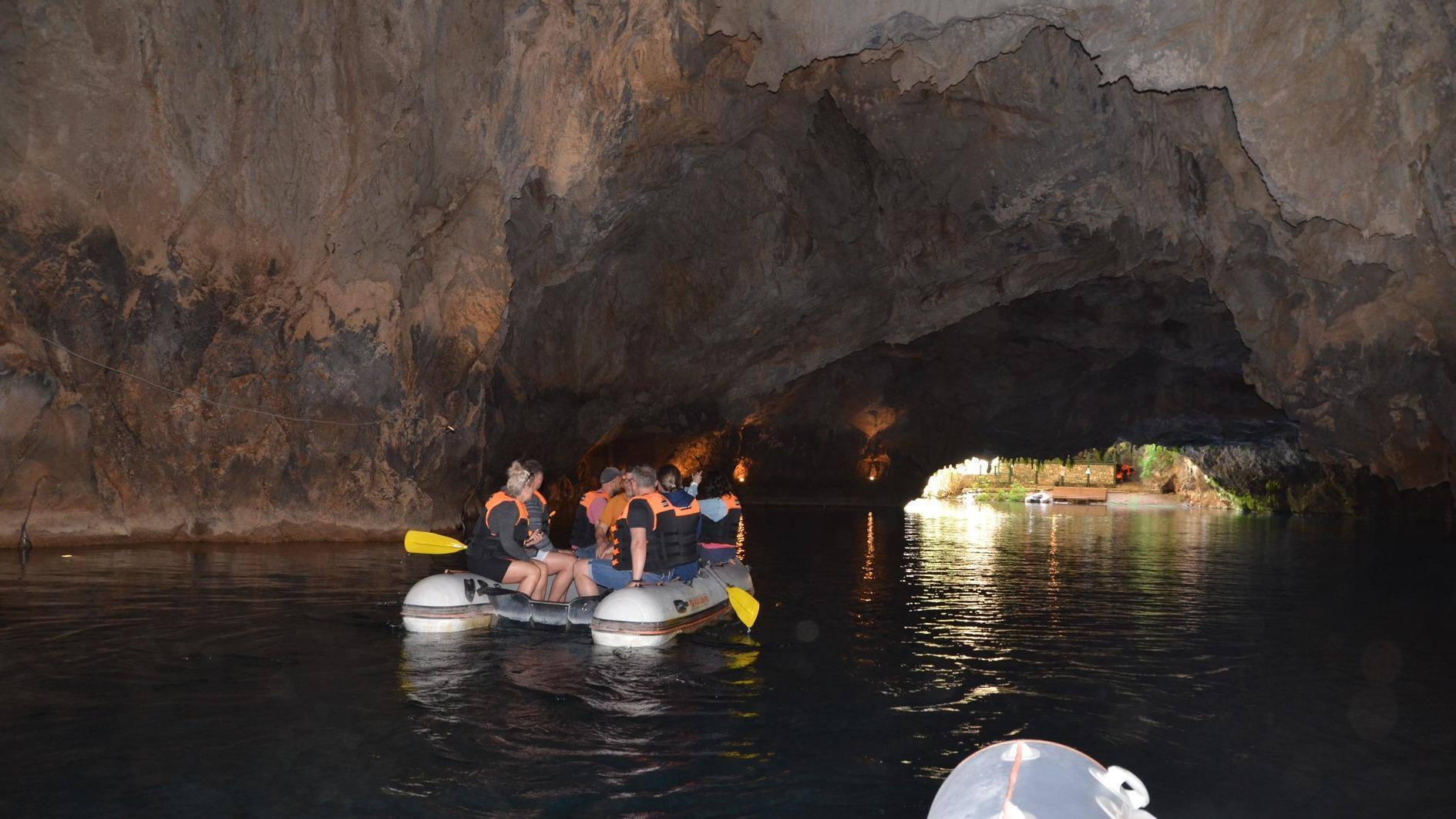Antalya’s Altınbeşik Cave emerges as alt tourism destination
ANTALYA

Nestled within Antalya’s İbradı district, Altınbeşik Cave stands witness to millions of years of geological evolution, captivating locals and tourists alike with its striking stalactites and tranquil pond formations.
Welcoming approximately 50,000 visitors in just the first four months of the year, this 2,500-meter-long natural wonder boasts mesmerizing white travertine formations.
Situated just nine kilometers from İbradı, the cave’s three-story expanse offers a glimpse into nature’s awe-inspiring craftsmanship.
Visitors can take boat tours through the turquoise waters that reveal formations up to 40 meters deep, guided by the skilled teams of the İbradı Municipality. The cave, which has an air temperature of 16 degrees Celsius in summer and winter, also gives visitors an opportunity for a dip all year round.
Mayor Hatice Sekmen highlighted Altınbeşik Cave’s status as the third-largest underground cave globally and Türkiye’s largest, emphasizing its unparalleled beauty.
With visitor numbers soaring, especially during holidays like Eid al-Adha, Sekmen underscores the cave’s year-round accessibility and its appeal to tourists from around the world.
“Our cave is open 12 months of the year. We continue to move forward as the locomotive of alternative tourism in the Antalya region,” she said. “Before, when it came to tourism, only sea, sand and sun came to mind. After the COVID-19 pandemic, our region received serious demand as interest in nature and alternative tourism grew.”
Yılmaz Özdoğan, overseeing operations at the cave, highlights the increasing numbers of visitors each year.
“Continuously, the number of visitors is increasing every year. Our daily visitor number reached 1,000 people. These are really serious numbers for us.”
With over 600 plant species and a diverse wildlife population, the journey leading to a cave constitutes a whole different delight, Özdoğan said.
“This is a very special national park. Sumac on one side, figs and laurel on one side, fragrant thyme on the other. You arrive to the lake by passing through them.”
















